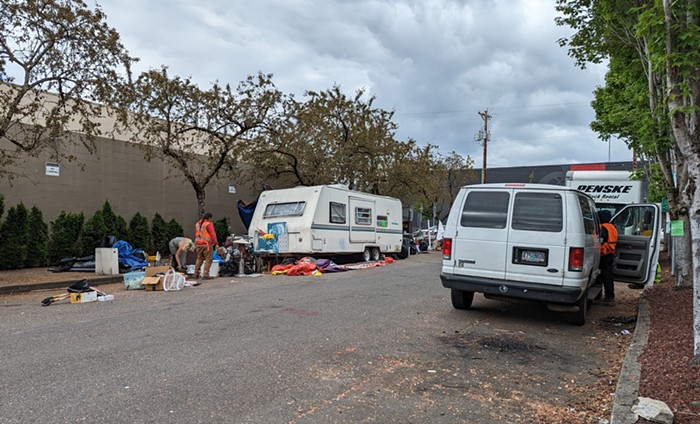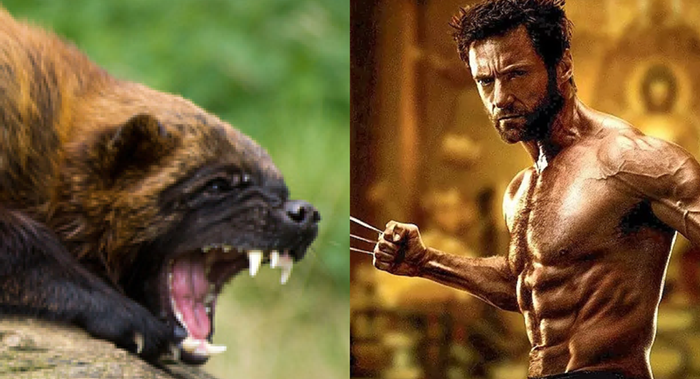
- Jeff Busby
Steve (Simon Laherty) is deep in an existential crisis brought on by thoughts of losing his friend Gary (Sonia Tueben) to a routine knee operation. Unfortunately, his crisis is standing in the way of a major deal. Without Steve nothing will move forward, but he’d rather stand in Pioneer Square trying to work things out. For corporate bigwigs Alan (Jim Russell) and Carolyn (Genevieve Morris), who are on the other side of the deal, it’s a situation that will not do. They will pull out every trick of coercion they know to exploit the presumed vulnerability of their counterparts.
We are in Pioneer Square with them—a rapt audience in silver headphones—looking on. Passers-by glance up at us as we stare out at the bricks. Some even stop to see what we’re looking at, but we’re the only ones privy to this drama. We’re the only ones who can hear Steve and Gary as they discuss the dilemma. We’re the only ones who really know them. This is our private spectacle, and we in turn are a very public spectacle.
Back to Back Theater has created an ingenious piece of theater in small metal objects. More like cinema verite than theater, only a portion of the performers are actual actors. The rest are appropriated extras. The hacky-sack players, the tourists strolling by in backpacks, the curious on-lookers, and those loitering in Portland’s living room all add a sense of rhythm and liveness to the production. The sounds and movement of the city itself create an immediacy and reality that would be impossible to achieve in a theater. So, as Gary and Steve are further entwined in the intricacies of their transaction, it’s easy to feel as if we’re witnessing a true-life struggle.
At the same time, the audience is particularly aware of their own part in the production. The photographers stopping to take pictures, the people staring as they walk by all remind us that this is indeed a play. The result is a shifting distance to the performance. Like looking through a telephoto lens, our attention zooms in and out—at times we feel a voyeurs sense of intimacy with the actors, and at other times we are acutely aware of our own conspicuous presence.
A dolorous movie-esque soundtrack (designed and composed by Hugh Covill) that accompanies the show further augments the whole experience. The music is deftly mixed with the actors dialogue in the audiences headphones and deepens the mood of the production.
The mood is one of anxiety, need, fear, and ultimately triumph. Small metal objects speaks to the value that we give the things in our life, be it objects, or people.
“That’s what my life is about,” Steve says to his friend at one point. “Keeping things that are valuable for as long as I can.”
“Everything has fucking value,” Gary responds.
But not everyone believes that. Back to Back is a company made up in part by people who are affected by intellectual disabilities. The story of the world’s interaction with individuals with such disabilities is fraught with a historical devaluation of them as human beings. That kind of devaluation is part and parcel to the institutionalization that most developed countries have begun to do away with. In many respects the world has treated disabled individuals as objects to be tucked away out of sight, or molded to fit notions of what “normal” should be.
The characters of Alan and Carolyn are representative of that world. Watching them negotiate a transaction with people they feel superior to reminded me of my years spent working in group homes with people affected (in various degrees) by developmental and intellectual disabilities. I hate to say it, but the methods of persuasion and the leveraging of power used by Alan and Carolyn are still somewhat common, even in an era of post-institutionalization.
I saw small metal objects as response to the structures of power and coercion that the world has set up around people with developmental disabilities. It’s also a story of how, when confronted with those structures, what we need more than anything is camaraderie. However, the production is so understated and at times so funny, that you don’t feel as if you’re being hit over the head with a moral.
The true trick of the show is that for a time, the voyeurism of the audience is put on display. For once it’s not the people affected by disability who are the subject of public scrutiny, it’s the audience in all of its strangeness, deep in an experience that no-one else who sees them can understand.












